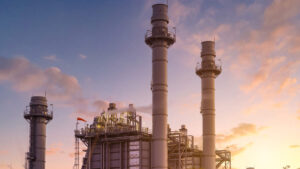Can New South Wales dig itself out of the energy hole it put itself into?

Some digging to go. Pic: Bernd Vogel via Getty Images
- Stringent regulations have made it difficult for NSW to develop gas resources
- State has plenty of gas potential that remains untapped
- Cost of not developing resources adding up rapidly
Bans on offshore exploration and mining, tough (possibly the toughest) coal seam gas regulations in Australia, and a seeming distaste for any kind of upstream oil and gas activity – that’s oil and gas exploration, development and production for the uninitiated – on all sides of the political spectrum.
Great optics for going green, not so much for the energy demands of the most populated state in Australia.
That’s exactly the picture faced by New South Wales going ahead.
Rather than develop its own gas resources, the state’s solutions to solve its gas shortages include blaming Western Australia for getting a larger slice of the GST pie (ludicrous given that it’s still just 70c to the dollar PAID by the state in the first place) and suggesting that Australia’s largest state could either pipe or ship gas over to NSW… at WA’s cost.
Yeah right.
Speaking to Stockhead, BPH Energy (ASX:BPH) managing director and executive chairman David Breeze said the state had bet that development of Santos’ Narrabri and liquefied natural gas import and regasification terminals would be able to address the requirement for another 70 petajoules of gas per annum.
The controversial Narrabri project is still some time away from appraisal drilling, much less development, due to considerable opposition while little to no progress has been made on the latter.
“Santos haven’t taken FID and of course the Ukrainian war with Russia has absolutely changed the dynamics of the international LNG marketplace such that all of Australia’s spare LNG or contracted LNG is needed for Japan, Korea, China and even the UK because of the critical shortage of gas in Europe,” Breeze added.
Matters on the East Coast have not been helped by the production declines experienced by the Victorian offshore gas fields in the Bass Strait and the Otway Basin, and the shut-in of the Northern Territory’s Northern Gas Pipeline due to the fall in production from the Blacktip field.
Australian’s ageing coal-fired power plants are also being retired faster than expected due to the high cost of keeping them running, which has left the Eastern States facing further energy shortages in the near term while South Australia’s Resources Minister has ruled out supplying NSW during gas shortages.
This has effectively painted NSW into a corner that it is now scrambling to get out of and which could threaten some 300,000 jobs, 33,000 businesses and 1.3 million households that rely on economical gas, according to the state’s business chamber.
Locked up gas potential
The irony of course is that NSW has the gas resources to avert the situation it is in.
It starts with the substantial coal seam gas potential in the Sydney, Gunnedah, Clarence-Moreton and Gloucester basins as manifested by Narrabri.
On its lonesome, Narrabri is looking to tap into some 1,500 petajoules (1.42 trillion cubic feet) of gas in the Gunnedah Basin to produce up to 200 terajoules of gas, or about half the state’s current demand.
That runs straight up against the state’s Department of Planning and Environment boasting that it has “toughest coal seam gas regulations” in Australia.
NSW also has plenty of gas potential in its offshore regions with PEP 11, which BPH’s affiliate Advent Energy sued former PM Scott Morrison for blocking, having Prospective Resources of 5Tcf of gas.
“To put that in perspective, Victoria has produced and kept the Eastern states’ gas network satisfied with 6Tcf of gas over the last 60 years,” Breeze explained.
“So a successful discovery, development and proving of the resource in PEP 11 permit will dramatically change the gas market dynamics on the East Coast.
“The successful commercial development of this project would in fact change the whole supply dynamics issues facing the East Coast.”
Turning the corner?
So if the gas resources are actually present but haven’t been exploited for whatever reason – whether political or regulatory, is there any chance that NSW would actually get around to developing its own resources?
There is certainly growing recognition from the Federal government that Australia – particularly the East Coast – needs to find and develop new gas resources.
Resources Minister Madeline King is certainly in favour of projects being allowed to go ahead as long as they meet environmental and economic requirements.
Treasurer Jim Chalmers’ budget presentation has also made it clear that the cost of energy is a crucial element in the inflationary pressures which Australia faces.
“That means that energy is driving the interest rate policies settings by the Reserve Bank and that in turn is impacting every single household across Australia,” Breeze added.
He pointed to how costly the energy crisis in Europe is proving to be, highlighting that then UK Prime Minister Elizabeth Truss had committed nearly $100bn to support households while the cost to the rest of Europe is currently up to about $200bn.
“That’s how critical and how important, additional inputs into the energy networks are,” he concluded.
At Stockhead we tell it like it is. While BPH Energy is a Stockhead advertiser, it did not sponsor this article.
Related Topics

UNLOCK INSIGHTS
Discover the untold stories of emerging ASX stocks.
Daily news and expert analysis, it's free to subscribe.
By proceeding, you confirm you understand that we handle personal information in accordance with our Privacy Policy.








